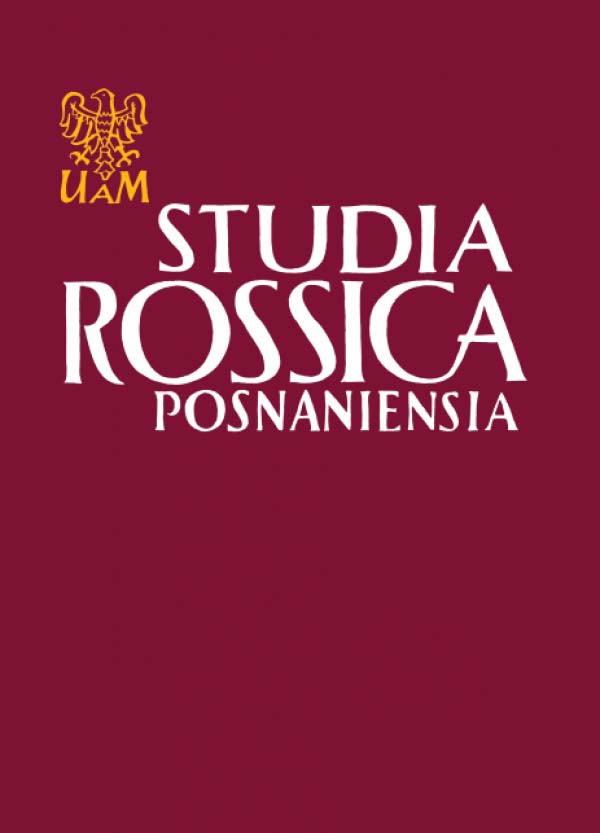STRUKTURA PRZESTRZENI EPICKIEJ W POWIEŚCI IWANA BUNINA „ŻYCIE ARSIENIEWA”
STRUCTURE OF EPIC SPACE IN IVAN BUNIN’S NOVEL 'THE LIFE OF ARSENEV'
Author(s): Halina BrzozaSubject(s): Language and Literature Studies, Studies of Literature, Philology
Published by: Uniwersytet Adama Mickiewicza
Summary/Abstract: Ivan B unin’s novel 'The Life of Arsenev is related in time of origin, topic and poetics to F. Mauriac’s Mémoires Interieurs, M. Proust’s A la Recherche du Temps Perdu, and J. Joyce’s Portrait of the Artist as a Young Man. It has no dramaturgic homogeneity or traditional plot, yet it charmes us with its plasticity and sensory beauty of Russian landscape. The author has unusual aesthetic sensitivety unattainable to anaverage perception, exceptional sensitivety to colour, light, sound, smell and even temperature, to humidity and distance. That is why the author of the novel was able to catch passing impressions “on the fly” and give a synthetic description of their sum in a form approaching that of threedimentional tangible pictures. The main purpose of the enquiries of this paper are Bunin’s means of literary expression through which the reader perceives the epic descriptions of nature in 'The Life of Arsenev' as if they were threedimentional. In this epic work views are at times formed along the lines of sculptural or musical structures and create in the recipient’sm ind pictures of space that imitate live nature. An analysis of the text of the novel makes it possible to follow the workshop process of creating an epic landscape which is nearly stereoscopicon its visual level and stereophonic on the level of sound. The author shows talent and sensitivety of a painter, photographer, musician, and even psychologist and the “physical” space in the novel undoubtedly plays an important role in the structure of the whole. It forms a background which exposes perfectly the personality of the narrator, young Arsenev who is intentionally identified with the author. Two parallel interwoven rhythms of two epochs can be discerned in the exposure of the third dimentionof the construction of the world presented by the novel in a mixture of lines, figures or separate space arrangements. The final phase of the epoch of noblemen’s homes is embodied in purely notional, impressionist, stereoscopic and stereophonic pictures woven with the most subtlenuances of various sensorial qualities (tones of light, tints of colour, sounds, aromas). In a sense they can be compared to Proust’s visions of Paris. The new twentieth century reality can in turn be found in the complicated arrangements of simplified elements of a rather notional character. These are saturated with conventional symbolic content. A new, one might say, cubist construction of a three dimentional picture from “pure substrates” of space, such as meagre lines, uniform plains of colour, geometrical figures, gives an entity which is seemingly modest and simple but contains a hidden sense. The artistically perfect form of the landscape which imitates nature is not the final objective in 'The Life of Arsenev'. By creating an illusionary depth with tricks borrowed from photography, painting and music Bunin greatly enriched literary description andused this way to convey the inner content of the work. The last part of the paper presents the lyrical, psychological, and philosophical implied meanings comprised in Bunin’s landscape saturated with depth. The double function of the description of physical space in the novel is discussed. Allegedly author’s own digressions, open and straight forward, provide the key to further investigations in to the role of the category of space in 'The Life of Arsenev'. If we take as the starting point the heroe’s reflections and dreams inspired by the unending distance, we shall find ourselves on the threshold of a new problem of “the psychological and philosophical are a and the poetic space ” in the novel. This, however, is beyond the scope of this paper.
Journal: Studia Rossica Posnaniensia
- Issue Year: 1/1970
- Issue No: 1
- Page Range: 111-129
- Page Count: 19
- Language: Polish

